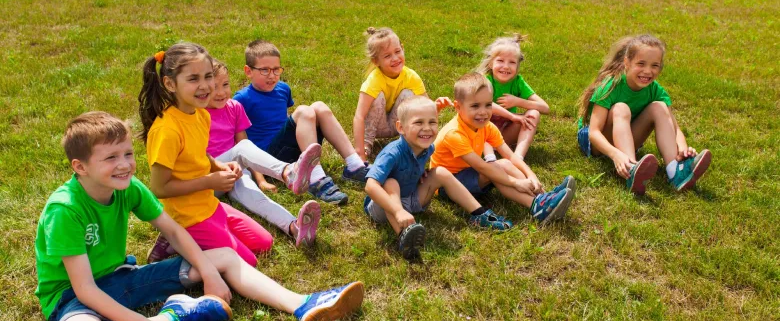Ways to Make Your Child Feel Secure and Social in a Group Care Setting
For many parents, enrolling their child in a group care setting—whether it’s daycare, preschool, or after-school programs—can be both exciting and nerve-wracking. While socialization opportunities are invaluable, it’s natural to worry about whether your child will feel secure, comfortable, and confident in a new environment.
Children thrive when they feel safe, supported, and connected to caregivers and peers. Whether you’re a parent preparing your little one for group care or a caregiver fostering a nurturing environment, here are some essential strategies to help children feel secure and socially engaged in a group care setting.
10 Ways To Make Your Child Comfortable In A Group
1. Start with a Gentle Transition
A sudden shift from a home environment to a group care or childcare setting can be overwhelming for young children. To ease this transition:
- Gradually introduce your child to the new setting by scheduling short visits before their first full day.
- Allow your child to meet their caregivers and familiarize themselves with the surroundings.
- Read books about starting daycare or preschool to set expectations and alleviate fears.
- Talk positively about the experience, highlighting fun activities and new friends they’ll make.
2. Establish a Routine
Children feel secure when they know what to expect. Consistent routines help reduce anxiety and provide a sense of control. Caregivers and parents can work together to:
- Establish a predictable daily schedule that includes meal times, playtime, rest, and structured activities.
- Provide visual schedules or picture charts for younger children to help them understand the day’s flow.
- Maintain consistency in drop-off and pick-up routines to build trust and reliability.
3. Encourage Attachment with Caregivers
A strong connection with caregivers is crucial for a child’s emotional well-being. Parents can:
- Talk positively about caregivers and reassure their children that they are safe in their care.
- Provide caregivers with insights about their child’s preferences, routines, and comfort items.
- Create a goodbye ritual that is consistent and reassuring, such as a hug and a special phrase like “See you after playtime!”
Caregivers can also build attachment by:
- Using warm, responsive interactions such as making eye contact, addressing children by name, and acknowledging their feelings.
- Offering comfort and reassurance when a child is upset.
- Creating a nurturing environment where children feel heard and valued.
4. Promote Social Interactions
Helping children develop friendships in a group care setting enhances their sense of belonging. Ways to foster social skills include:
- Encouraging cooperative play activities like building with blocks, playing pretend, or group storytelling.
- Teaching simple social skills, such as sharing, turn-taking, and using polite words like “please” and “thank you.”
- Modeling positive social behavior by demonstrating kindness and respect in interactions.
- Organizing buddy systems or pairing new children with a familiar peer to help ease their transition.
5. Validate and Address Emotions
Children in a new setting may experience a mix of emotions, from excitement to separation anxiety. Validating their feelings helps them process emotions in a healthy way.
- Acknowledge their emotions by saying, “I see that you’re feeling sad. It’s okay to miss home, and I’m here to help.”
- Provide comforting strategies, such as deep breathing exercises or a special comfort object.
- Use emotion charts or storybooks about feelings to help children express and understand their emotions.
6. Encourage Independence While Offering Support
Developing independence helps children gain confidence in a group setting. Encourage independence by:
- Allowing them to make choices, such as picking out their clothes or deciding which activity to do first.
- Teaching self-help skills like washing hands, packing their backpack, or tidying up after activities.
- Offering praise and encouragement for their efforts, reinforcing a positive self-image.
7. Create a Welcoming Environment
A warm and inviting atmosphere can make a significant difference in helping children feel secure. Caregivers can enhance the environment by:
- Decorating spaces with familiar and cheerful elements, such as photos of the children and their families.
- Setting up cozy corners with books, soft cushions, and sensory toys for children who need a moment of comfort.
- Providing inclusive activities that cater to different interests and abilities, ensuring every child feels valued.
8. Encourage Parental Involvement
When parents and caregivers collaborate, children feel a stronger sense of security. Encourage parental involvement by:
- Keeping open communication through daily updates or newsletters about the child’s activities and progress.
- Inviting parents to participate in events, storytelling sessions, or volunteer opportunities.
- Seeking input from parents about their child’s unique needs, preferences, and routines.
9. Address Separation Anxiety with Care
Some children take longer to adjust to group care settings, and that’s okay. To help ease separation anxiety:
- Keep goodbyes short and positive; lingering can make the transition harder.
- Allow children to bring a familiar object from home, like a stuffed toy or blanket.
- Reassure them that you’ll be back and remind them of the routine (e.g., “After playtime and lunch, I’ll pick you up!”).
- Encourage caregivers to provide extra comfort and distraction with engaging activities.
10. Celebrate Small Wins and Progress
Every step a child takes toward feeling more comfortable in a group care setting is worth celebrating. Recognizing progress can boost their confidence and motivation. Ways to celebrate include:
- Praising moments of bravery, such as trying a new activity or playing with a new friend.
- Creating achievement charts where children earn stickers for positive behaviors.
- Sharing positive feedback with parents to reinforce encouragement at home.
Conclusion
Helping a child feel secure and social in a group care setting requires patience, consistency, and collaboration between parents and caregivers. By fostering a nurturing and supportive environment, children can develop confidence, build friendships, and enjoy their group care experience.
Every child adjusts at their own pace, so it’s important to celebrate their journey and offer reassurance along the way. With the right approach, group care settings can become a second home where children feel safe, loved, and excited to learn and grow. As experienced childcare service providers, we can assist you in finding the right childcare center that is a comfortable fit for your child and supports their educational needs.




